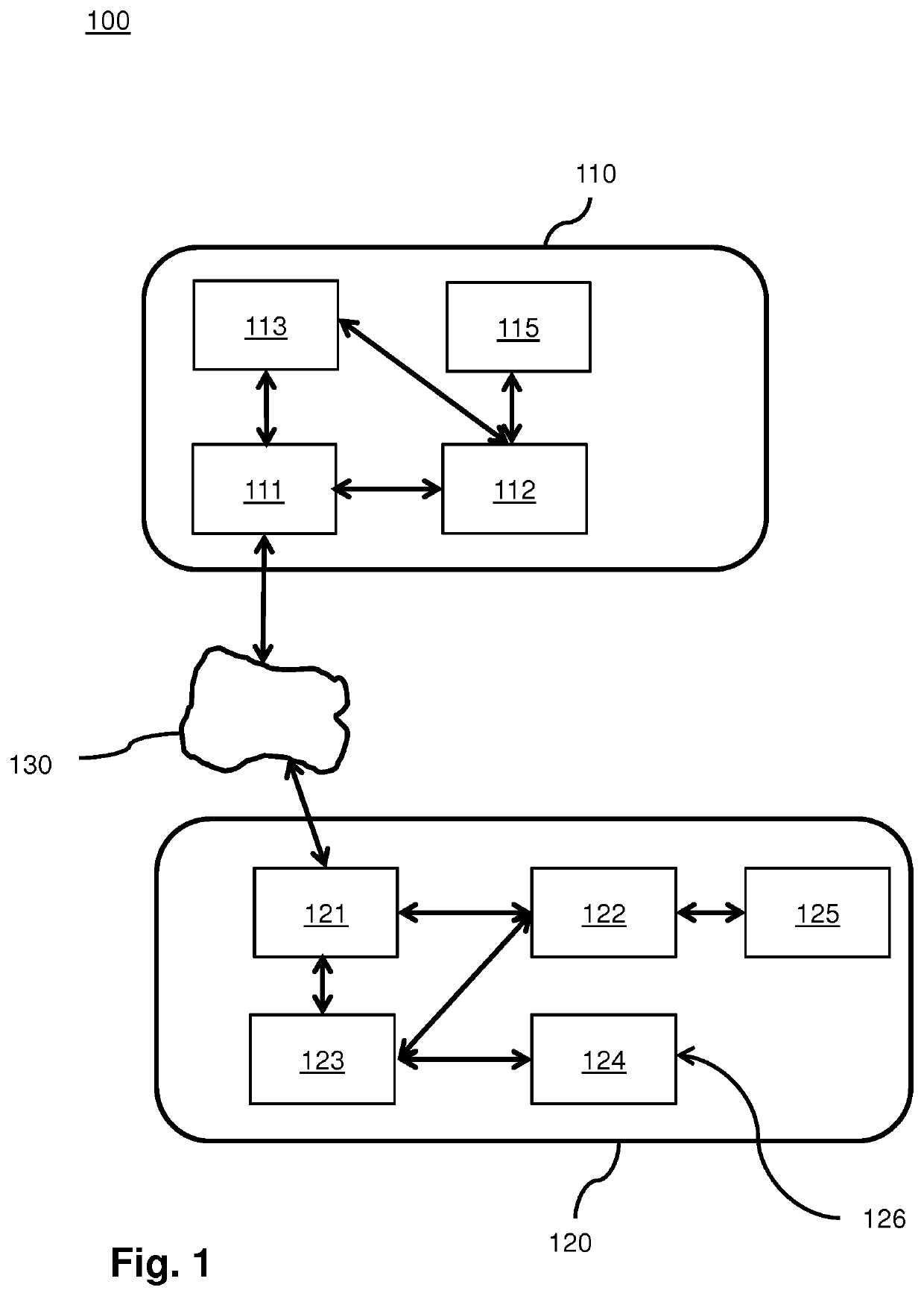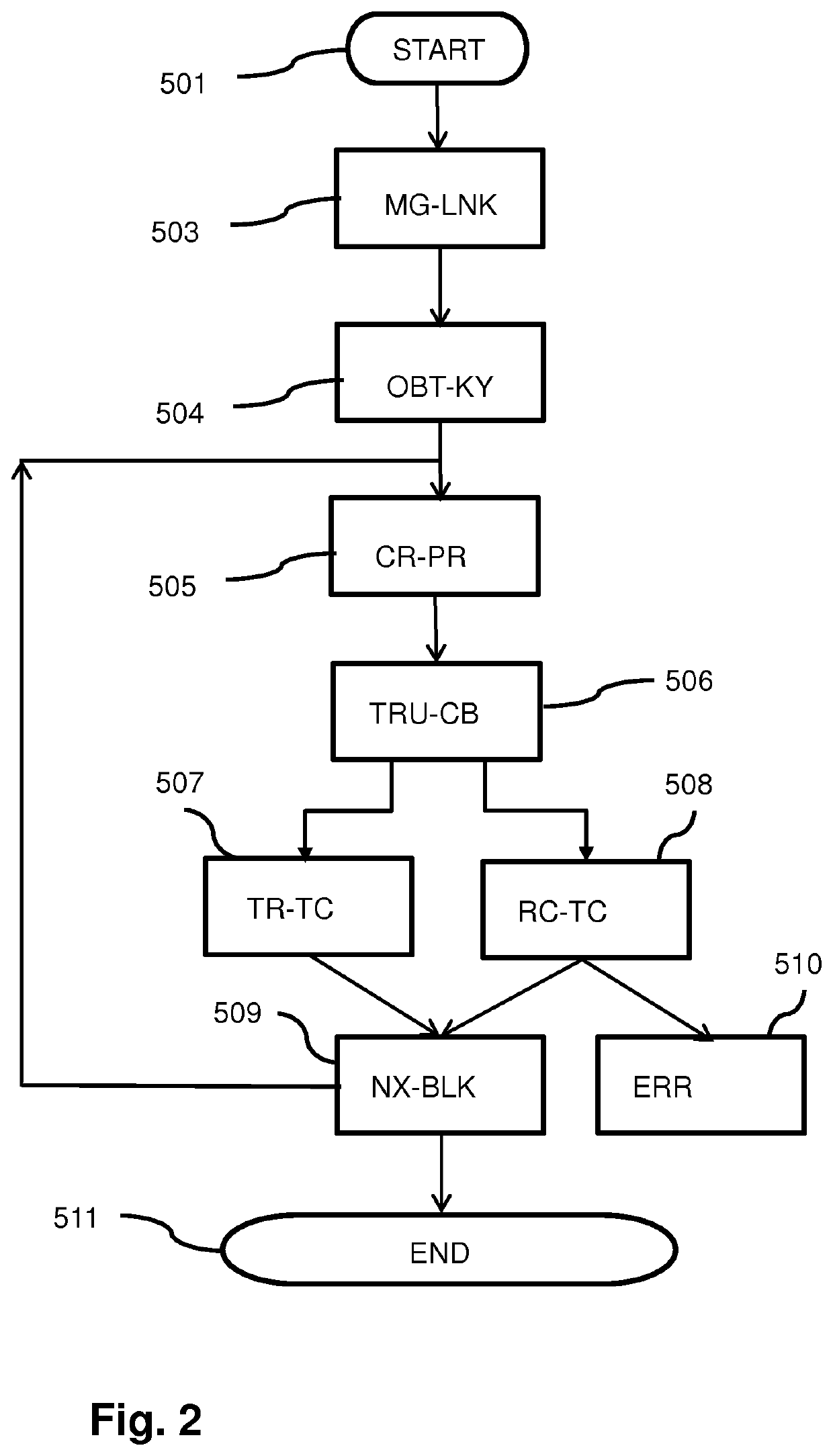Methods and devices for providing message authentication code suitable for short messages
a technology of authentication code and authentication code, which is applied in the direction of securing communication, digital transmission, instruments, etc., can solve problems such as data use, and achieve the effects of reducing overhead, reducing message size, and facilitating flexibility
- Summary
- Abstract
- Description
- Claims
- Application Information
AI Technical Summary
Benefits of technology
Problems solved by technology
Method used
Image
Examples
Embodiment Construction
[0034]FIG. 1 shows two devices for communication in a network, one adapted for sending messages using the truncated MAC and the other adapted for receiving messages with the truncated MAC.
[0035]In a communication system 100 a network provides communication 130 between two devices 110 and 120 according to a communication protocol.
[0036]The communication protocol defines messages on a link between the two devices, or between two applications running on the processors 113, 123 of the devices, or between an application running on processor 123 and a processor (not shown in the figure) to which device 110 forwards the messages from device 120 to. The messages contain data that does not need integrity protection, data that does need integrity protection and a short message authentication code (MAC).
[0037]The device 120 has a transceiver 121 arranged for transceiving according to the communication protocol, a truncated MAC generator 122 for generating the truncated MAC codes for integrity ...
PUM
 Login to View More
Login to View More Abstract
Description
Claims
Application Information
 Login to View More
Login to View More - R&D
- Intellectual Property
- Life Sciences
- Materials
- Tech Scout
- Unparalleled Data Quality
- Higher Quality Content
- 60% Fewer Hallucinations
Browse by: Latest US Patents, China's latest patents, Technical Efficacy Thesaurus, Application Domain, Technology Topic, Popular Technical Reports.
© 2025 PatSnap. All rights reserved.Legal|Privacy policy|Modern Slavery Act Transparency Statement|Sitemap|About US| Contact US: help@patsnap.com



